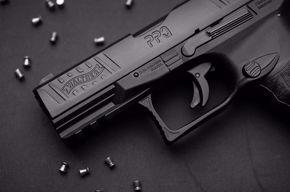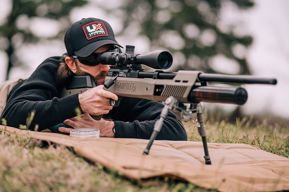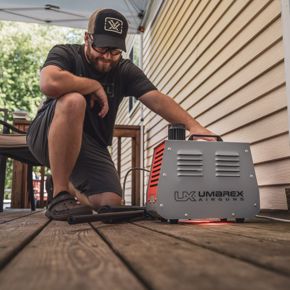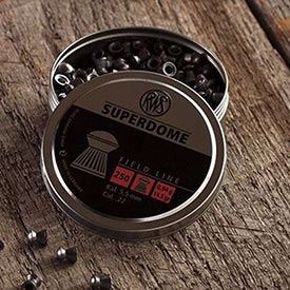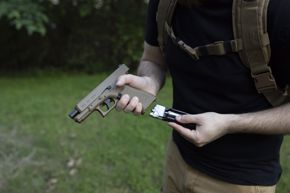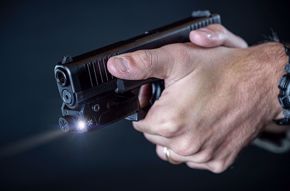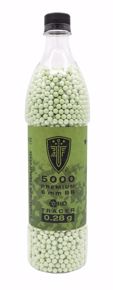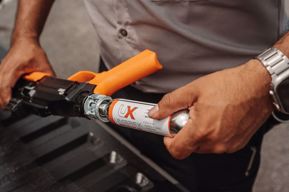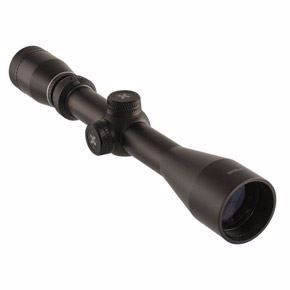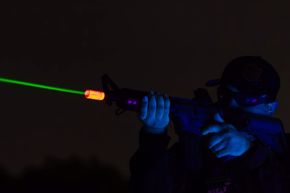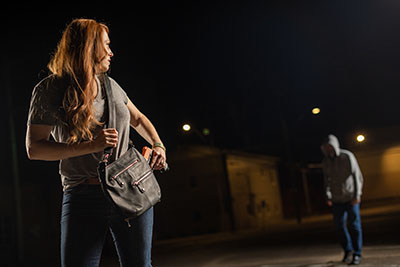 What is a transitional space? It’s just a fifty-cent word that describes places like parking lots, hallways, courtyards– any place where you are moving from one location to another. Transitional spaces are places where we are vulnerable to predatory criminals doing their work.
What is a transitional space? It’s just a fifty-cent word that describes places like parking lots, hallways, courtyards– any place where you are moving from one location to another. Transitional spaces are places where we are vulnerable to predatory criminals doing their work.
All one needs to do to get an idea of how dangerous transitional spaces can be is to search on your favorite video platform for “transitional space attacks”. There should be no shortage of results of people being attacked, some being killed, in these transitional spaces.
Transitional spaces are dangerous because we tend to falsely assume safety when there’s no reason to assume it. The truth is we are distracted by our mobile devices, we aren’t aware of what is really going on around us, and we don’t have a plan of action if the wheels come off the wagon.
A Framework for Understanding Your State of Awareness
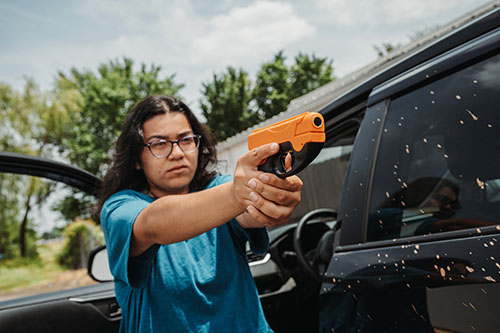 Noted defense and firearms expert Col.(ret) Jeff Cooper developed the language that has become the standard for describing a person's state of mind in various situations. The language is easy to understand and is based on a logical color code.
Noted defense and firearms expert Col.(ret) Jeff Cooper developed the language that has become the standard for describing a person's state of mind in various situations. The language is easy to understand and is based on a logical color code.
-
Condition White- In Condition White we are unaware and unprepared. Condition White is not an ideal state to exist in, but, unfortunately, many people spend much of their lives in this state. In Condition White the most likely outcome is we lose a fight should a fight come to us. The only acceptable time when Condition White is OK is when you are asleep, and even then, you should have a plan and tools accessible to immediately transition to Orange or Red.
- Condition Yellow- Describes a state of relaxed alertness. In this state a person is aware of what is going on around them. Your ears are open and listening for sounds that don’t belong in the environment you are in. Likewise, you are aware of the people around you in all directions. Condition Yellow leads you to make decisions on movements, people who might be threats, and routes of escape.
- Condition Orange- Condition Orange occurs when a threat has been identified and your focus transitions from what you are doing to how you are going to deal with the situation that is unfolding in front of you. In Condition Orange, the moments are defined by “if-then” decisions. You may need to take no action, you may need to flee, or you may need to fight, or you may need to transition back to Condition Yellow.
- Condition Red- In this state, one of those if-then decisions has pushed you into action. As stated above, that action could be to escape from the situation or it might be to fight/defend yourself.
Pay attention to the top half of these codes, White and Yellow, and apply this information to your daily walk through life, including both transitional and non-transitional spaces. Yes, one could argue that sitting on the couch with your family in your home is about as safe as you can get. However, tuning out to Condition White is still not advisable when you are tucked away in your home. Things can and do happen that disrupt our lives even when we are deep within our castle. Home invasions, while not prolific, are becoming more common, even in affluent neighborhoods. Additionally, there are other threats that can spill over into your property like reckless drivers/police pursuits or neighbor’s domestic situations.
Mustard is Better Than Mayonnaise
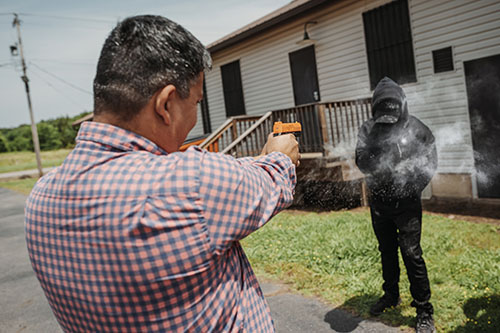 Existing in Condition White when you are at home leaves your awareness and decision making capabilities unempowered. Staying in Condition Yellow means you will be much better prepared should something happen near or in your home.
Existing in Condition White when you are at home leaves your awareness and decision making capabilities unempowered. Staying in Condition Yellow means you will be much better prepared should something happen near or in your home.
But when we are out, when we are filling up the car, walking into work, getting on an elevator, walking through retail shopping space, sitting at a red light– anywhere you are moving, or waiting to move and a potential assailant has a tactical advantage over you, being in Condition White is inexcusable. What are we doing in these transitional spaces?
- Catching up on Social Media
- Watching a video on a mobile device
- Mindlessly singing along with the radio
- Dealing with the “emergency’ situation in the back seat (the screaming kid)
- Lost in the sauce (totally tuned out or in your “nothing box”)
There’s probably a hundred other things that could be added to that list, but the point is made. We aren’t paying attention to our surroundings and things often surprise us.
Getting your mind and body into Condition Yellow helps moving through those transitional spaces much safer for you and any loved ones with you. An example I like to use comes from my college job as a bank teller. In a training session, the security instructor explained the bank’s policy of greeting and making eye contact with each customer when they walked in the door. It wasn’t just to be friendly, but to make it known to the person entering the building that they had been marked. This sat well with our normal customers because here in the south, we tend to be very friendly, even to complete strangers. I’m positive on at least one occasion this policy in action prevented a robbery– simply because we were paying attention to who walked in the door.
Are You Ready for a Fight?
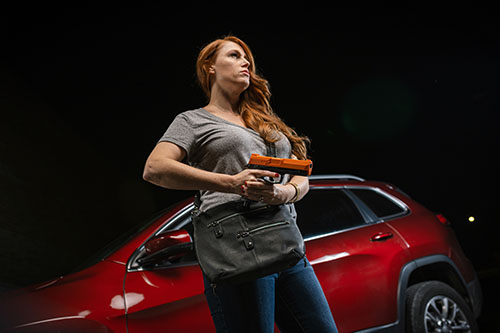 Imagine being aware of the people who are passing by you, noticing if they are armed, if they are exhibiting erratic behavior, or marking you as their target. When you are tuned into your environment, you can spot these people who are taking advantage of the spaces that you are sharing with them and looking for a target or just not quite right.
Imagine being aware of the people who are passing by you, noticing if they are armed, if they are exhibiting erratic behavior, or marking you as their target. When you are tuned into your environment, you can spot these people who are taking advantage of the spaces that you are sharing with them and looking for a target or just not quite right.
With this said, what are you doing should something happen that takes you into Condition Orange? What about Condition Red? Remember, Condition Orange means you are picking up on a vibe, while Condition Red means that vibe is now a threat that needs to be addressed. If you do find yourself in a situation where a decision has been made for you, and you are camped out in Condition Red, you will need A. Laser Focus on the Situation B. Quick, Decisive Action C. Resolve to see your actions through.
You may need to make a quick escape, you may need to fight, you may need to buy time– The one luxury you are not afforded with is ignoring the situation. Let’s go down the middle option of the three listed. You have to fight. What are you going to fight with? There are a couple of old adages that are extremely applicable to “the fight”.
Axiomatic Wisdom for the Win
The first one is, “There is no such thing as a fair fight.” Should the proverbial manure hit the oscillating wind machine, you have one goal; to win. What does winning look like? It looks like survival. You may be punched, stabbed, shot– a combination of the three. No, an assailant is not concerned with playing by any known set of rules. He’s not going to pin you to the mat, he’s not going to keep the blows above the belt. An assailant wants you frozen, either with fear or pain or both. You don’t get to play patty-cake, you don’t get a do-over.
The second axiom is, “Never bring a knife to a gunfight.” I know, not every attacker is carrying a gun. He might have a knife, street fighting skills, professional MMA fighting skills, or chemically enhanced strength/pain resistance. What do you have? Some fighting skills are great, but a force multiplier is better than that. Do you have that force multiplier with you?
Remember, winning looks like living, and to live you have to put space between you and an assailant. Some common force multipliers are:
- Knives (Usually able to carry about anywhere, but is a close contact device. Last resort.)
- Pepper Spray (can be carried in most places, close proximity use, possible blowback exposure)
- Stun-gun (Small, easy concealment, lose contact, prohibited in some states)
- Pepper Ball Gun (concealable, usable from a distance, impact + pepper, not legal in some states)
- Firearm (concealable, usable from distance, impact, not legal in some areas/states*)
Owning a force multiplier of any kind is great. However, not having that force multiplier with you is the same thing as not having it at all. Whatever tool or tools you use, you need to be very familiar with them and have it with you, particularly in transitional spaces.
Should you choose to add one of the P2P Pepper Ball launchers to your Every Day Carry gear, you should use the device with both rubber and inert dust training ammo to practice some scenarios and techniques. Can you draw the device standing, seated, or from a storage device quickly? Can you put the rounds on target? Can you vacate the area directly after deploying the device? Putting space between and the assailant yourself means increasing your chance of winning.
*While owning a handgun is not illegal in the US, being able to legally carry one in certain areas is still problematic in spite of legal decisions that support the carry and use of handguns for personal protection.

